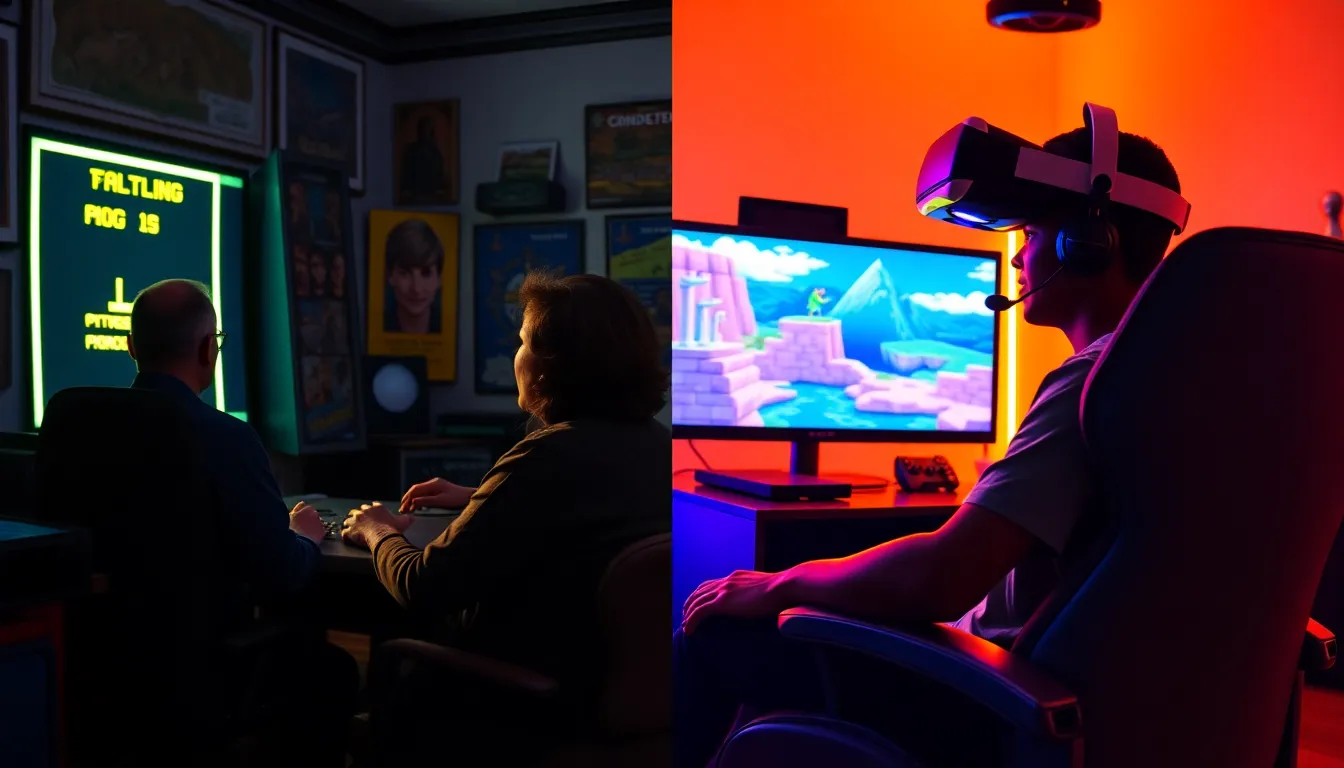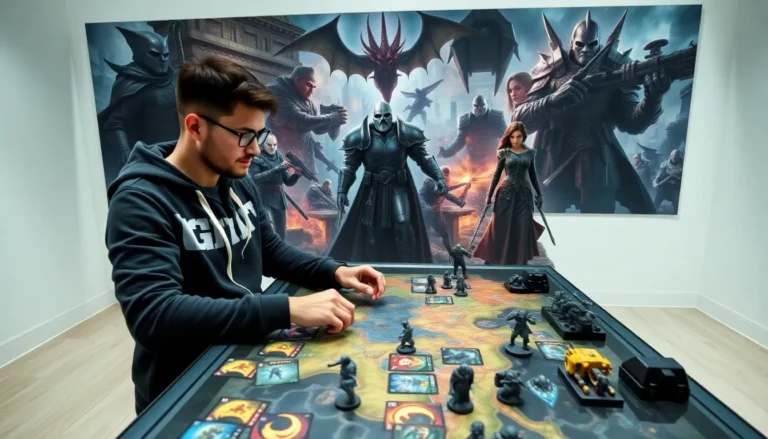Table of Contents
ToggleGaming culture has become a cornerstone of modern entertainment, seamlessly merging creativity with technology. From retro classics to immersive AAA titles, the journey through gaming’s history reflects not just technological advancements, but also societal shifts. This article dives into the evolution of gaming, exploring genres, community dynamics, and future trends that define this vibrant landscape.
The Evolution Of Gaming: From Pixels To AAA Titles

The world of gaming has undergone a remarkable transformation over the last few decades, evolving from simple pixelated graphics to stunning, immersive experiences that captivate millions.
Key Milestones In Gaming History
The journey of gaming began in the 1970s with the advent of arcade games like “Pong” and “Space Invaders,” which set the stage for an industry that would grow exponentially. The release of home consoles in the 1980s, such as the Atari 2600, allowed players to experience gaming from the comfort of their homes. The introduction of 3D gaming in the 1990s, with titles like “Doom” and “Final Fantasy VII,” revolutionized the way games were developed and played.
Fast forward to today, where AAA titles dominate the scene, showcasing breathtaking graphics and intricate storylines. Games like “The Legend of Zelda: Breath of the Wild” and “The Last of Us Part II” are not just games: they are rich narratives that explore complex themes and draw players into their worlds.
The Impact Of Technology On Game Development
Technological advancements have played a crucial role in shaping the gaming landscape. The rise of powerful consoles, advancements in computer graphics, and the proliferation of high-speed internet have made it possible to create more complex and engaging gaming experiences.
Also, the development of engines like Unreal and Unity has democratized game creation, allowing indie developers to produce high-quality games without the need for massive budgets. This shift has led to a surge in innovative titles that challenge traditional gaming norms and engage diverse audiences.
Gaming Genres: A Diverse Landscape
The landscape of gaming is vast and varied, with countless genres catering to the tastes of diverse players. This diversity enriches the gaming experience and keeps players engaged.
Popular Genres And Their Evolution
Initially, gaming genres were relatively straightforward, including platformers, shooters, and puzzle games. But, as the industry evolved, so did the genres themselves. Role-playing games (RPGs) have transformed from turn-based systems to dynamic, open-world experiences where players can craft their own paths.
Recently, battle royale games such as “Fortnite” and “Apex Legends” have taken the world by storm, highlighting a shift towards competitive multiplayer experiences. This brief overview illustrates how genres can adapt and grow in response to player preferences and technological advances.
Emerging Genres Worth Watching
As gaming continues to evolve, several emerging genres are capturing the attention of developers and players alike. One significant trend is the rise of narrative-driven games that prioritize storytelling. Titles like “Life is Strange” and “Hades” have proven that engaging narratives can coexist with traditional gameplay mechanics.
Also, the fusion of different genres, such as deck-building games combined with roguelikes, seen in games like “Slay the Spire”, demonstrates an exciting avenue for exploration within the gaming realm.
The Community Aspect Of Gaming
One of the most compelling aspects of gaming lies in its community. The shared experiences, whether positive or negative, foster a sense of belonging that transcends geographical boundaries.
Building Connections: Online Communities And Multiplayer Gaming
Online multiplayer games have redefined how players connect. Platforms like Discord, Reddit, and various gaming forums serve as hubs for discussion, strategy-sharing, and socialization. Players can forge friendships, participate in competitive teams, and form communities based on shared interests or fandoms.
Also, games like “World of Warcraft” or “Among Us” illustrate how gaming can foster teamwork and collaboration, creating a unique camaraderie among players.
The Role Of Streamers And Content Creators
In recent years, the emergence of streamers and content creators has transformed the gaming landscape. Platforms like Twitch and YouTube allow gamers to share their experiences, offering live gameplay, tutorials, and commentary that engage vast audiences. Streamers often serve as cultural icons within the gaming community, influencing trends and promoting new titles.
This has also led to an increase in developer accountability, as content creators often share feedback and critiques from their followers, which can influence game development and updates.
The Future Of Gaming: Trends To Watch
As the gaming landscape continues to change, several trends are shaping what the future holds for this dynamic industry.
Virtual Reality And Augmented Reality Innovations
Virtual reality (VR) and augmented reality (AR) are at the forefront of gaming innovations. With devices like the Oculus Rift and the PlayStation VR, developers are beginning to explore fully immersive environments that allow players to engage in games like never before.
AR games, like “Pokémon GO,” have also shown the potential these technologies have to blend the digital with the real world, encouraging exploration and social interaction. The future of gaming will likely see further advancements in these technologies, creating even more engaging experiences for players.
The Rise Of Subscription Services And Cloud Gaming
Subscription services such as Xbox Game Pass and PlayStation Now are altering how games are consumed. These services provide players with access to a vast catalog of titles for a monthly fee, changing the traditional model of game ownership.
Cloud gaming technology, as seen in Google’s Stadia and NVIDIA’s GeForce Now, allows players to stream games without the need for powerful hardware. This development is democratizing access to gaming, making high-quality games available to a broader audience.
Conclusion
To conclude, the world of gaming continues to evolve and expand in exciting ways. From its humble beginnings to the current landscape filled with rich narratives and robust communities, gaming culture is a testament to human creativity and technological progress. As new genres emerge and innovations in VR, AR, and cloud gaming take center stage, the future promises a vibrant tapestry of experiences that will only deepen our connection to this ever-expanding digital universe.







